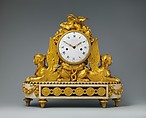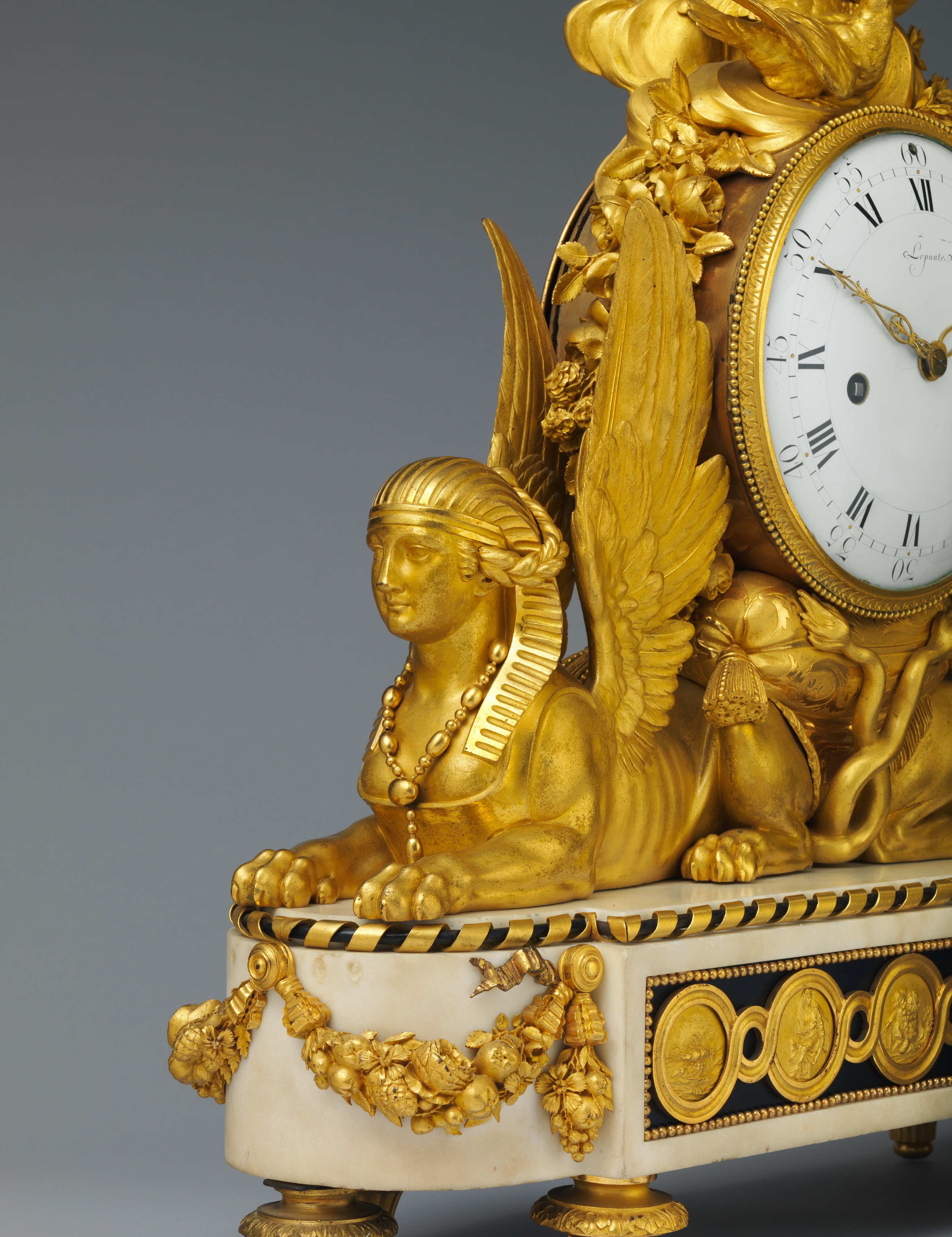Mantel clock (pendule de cheminée)
Capturing daily life in the French capital on the eve of the Revolution, the playwright Louis-Sébastien Mercier (1740–1814) observed in Tableau de Paris: “Every chimney-piece has its clock; a pity, I think; a dismal fashion. Nothing is more dreary to contemplate than a clock; you watch your life ebbing, the pendulum ticks off each second that is yours only as it passes, and then is yours no more. Clocks are everywhere, in every room you see them, and apparently nobody finds them disturbing, though they mark most mercilessly the flight of the hours; clocks like little temples, or with domes of gilded bronze, or perhaps globes of white marble, with figures running round like an equator.. . . Luxury has run the whole gamut of imagination in devising these superfluous splendours, it can go no further; and since they are quite useless, and not even pleasing to the eye, the waste of money in such futile expenditure is heartbreaking.”
Would Mercier have been equally critical of the Museum’s timepiece, its movement resting on a tasseled cushion placed on the backs of two winged sphinxes? The cresting of the case alludes to love: a pair of billing doves perches on clouds from which spill flowers, mostly roses and myrtle branches, both sacred to Venus. The sphinxes recline on a white marble base with semicircular ends that are embellished with garlands of fruit and flowers. The recessed tolework panel in front encloses medallions depicting six of the twelve zodiac signs. With their striated wigs, the sphinxes are expressions of the budding interest in a novel form of decoration inspired by art from ancient Egypt. A clock of nearly this exact model was supplied for use in the salon at Bagatelle, the pleasure pavilion built in just sixtythree days for the comte d’Artois, whose sister-in-law Marie-Antoinette had wagered that the work could not be finished in less than three months. The architect Bélanger provided designs not only for the building but also for many of its interior furnishings, which took longer to complete, however. A contemporary document pertaining to the Bagatelle clock provides a date of 1783, gives the name of the designer Bélanger, and identifies Pierre Gouthière, an exceptionally fine bronze worker, as the chaser and gilder. Gouthière was known for a special type of gilding with a matte finish that creates a lively effect when set next to burnished areas, as seen on the Museum’s clock. The movement is by the Lepaute workshop, a distinguished firm of clockmakers consisting of various family members by that name, which appears on the dial.
Due to rights restrictions, this image cannot be enlarged, viewed at full screen, or downloaded.
This artwork is meant to be viewed from right to left. Scroll left to view more.





